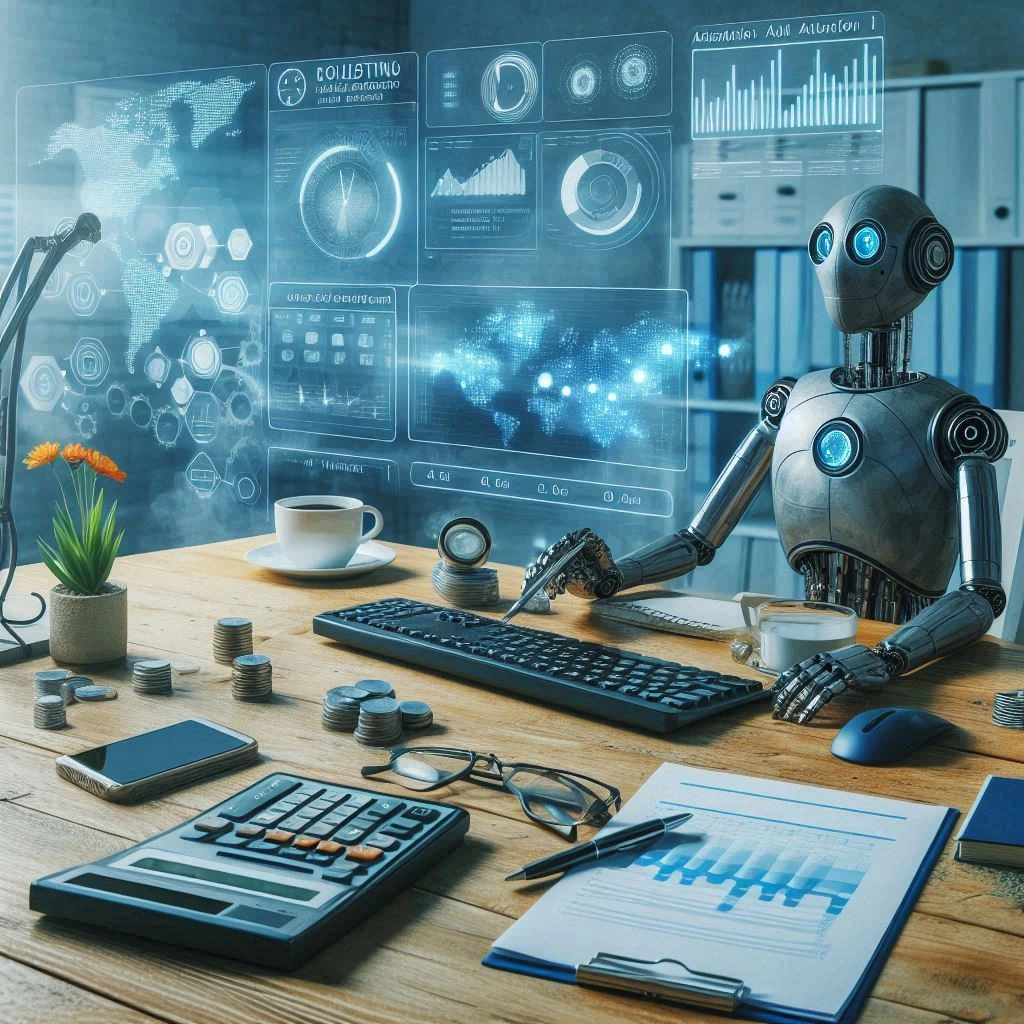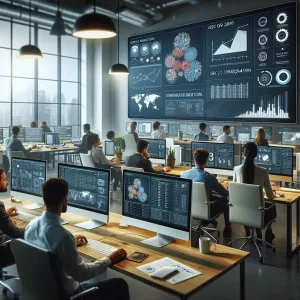In the realm of internal auditing, audit tests of controls play a pivotal role in assessing the effectiveness of an organization’s internal control systems. These tests are designed to evaluate whether the controls in place are functioning as intended and are capable of mitigating risks associated with financial reporting and compliance.
Audit tests of controls refer to procedures performed by auditors to determine the effectiveness of an organization’s internal controls. These tests assess whether the controls are designed properly and are operating effectively to prevent or detect errors and fraud in financial reporting. According to the International Federation of Accountants (IFAC), the planning stage of an audit requires auditors to perform a risk assessment and understand the internal controls in place, which is essential for determining the nature, timing, and extent of further audit procedures [4].
The significance of controls in internal audits cannot be overstated. Effective internal controls are crucial for ensuring compliance with regulations, safeguarding assets, and enhancing the reliability of financial reporting. They serve as a first line of defense against risks, including fraud and operational inefficiencies. By implementing robust controls, organizations can not only comply with legal and regulatory requirements but also improve their overall risk management framework [5][6]. The testing of these controls is essential to verify their effectiveness and to identify any weaknesses that may expose the organization to potential risks.
Traditionally, testing controls involved a manual approach where auditors would perform a series of procedures to evaluate the design and operational effectiveness of controls. This often included walkthroughs, inquiry, observation, and re-performance of control activities. Auditors would document their findings and assess whether the controls were functioning as intended. However, this method can be time-consuming and may not always provide a comprehensive view of the control environment [3][14].
As technology continues to evolve, the landscape of audit tests of controls is shifting towards more automated and data-driven approaches. Automation not only enhances the efficiency of testing but also improves the accuracy and reliability of the assessments, allowing auditors to focus on higher-risk areas and strategic insights [11][12].
Understanding audit tests of controls is fundamental for internal auditors, especially as the industry embraces technological advancements. The integration of automation and AI into audit processes promises to transform how controls are tested, ultimately leading to more effective risk management and compliance strategies.
The Role of Technology in Internal Audit
The landscape of internal auditing is undergoing a significant transformation, driven by advancements in technology. As organizations increasingly embrace automation and artificial intelligence (AI), the efficiency and effectiveness of audit processes are being enhanced in remarkable ways. Here are some key points highlighting the impact of technology on internal audit practices, particularly in the context of audit tests of controls.
Overview of Technological Advancements in Internal Auditing
The integration of technology into internal auditing has led to the development of sophisticated tools and methodologies that streamline audit processes. These advancements include:
- AI-Powered Analytics: AI technologies are being utilized to analyze vast amounts of data quickly, identifying patterns and anomalies that may indicate control weaknesses or fraud risks. This capability allows auditors to focus on high-risk areas and make informed decisions based on data-driven insights [12].
- Automation of Routine Tasks: Many traditional manual processes, such as data collection and preliminary analysis, are now automated. This shift not only reduces the time spent on repetitive tasks but also minimizes human error, leading to more reliable audit outcomes [13].
The Shift from Manual Processes to Automated Solutions
The transition from manual to automated audit processes represents a significant evolution in the field. Key aspects of this shift include:
- Efficiency Gains: Automated solutions enable auditors to conduct tests of controls more rapidly and accurately. For instance, automated testing can continuously monitor controls, providing real-time feedback on their effectiveness, which is crucial for timely decision-making [14].
- Enhanced Coverage: With automation, auditors can expand the scope of their testing. Instead of sampling a few transactions, technology allows for comprehensive testing of all transactions, increasing the likelihood of detecting issues that may have been overlooked in manual audits [11].
Benefits of Technology Adoption in Audit Practices
The adoption of technology in internal audit practices offers numerous benefits, including:
- Improved Accuracy: Automated audit tests reduce the risk of human error, ensuring that the evaluation of internal controls is based on precise data analysis. This accuracy is vital for assessing the effectiveness of controls and identifying areas for improvement [8].
- Cost-Effectiveness: By streamlining processes and reducing the time required for audits, organizations can achieve significant cost savings. The efficiency gained through technology allows internal audit teams to allocate resources more effectively, focusing on strategic initiatives rather than routine tasks [6].
- Informed Decision-Making: The insights generated from AI and data analytics empower auditors to make more informed decisions. By understanding the effectiveness of internal controls through real-time data, auditors can provide valuable recommendations to management, enhancing overall governance and risk management processes [5].
The future of audit tests, particularly in the realm of internal controls, is being shaped by the integration of technology. As internal auditors and IT auditors embrace these advancements, they can expect to see improved efficiency, accuracy, and effectiveness in their audit processes, ultimately leading to stronger organizational governance.
Understanding Automation in Audit Tests
As the landscape of internal auditing evolves, the integration of automation and artificial intelligence (AI) is becoming increasingly significant. This transformation is particularly evident in the realm of audit tests of controls, where technology is reshaping traditional methodologies to enhance efficiency and effectiveness.
Definition of Automation in the Context of Audit Tests
Automation in audit tests refers to the use of technology to perform tasks that were traditionally carried out manually. This includes the application of software tools that can execute audit procedures, analyze data, and generate reports with minimal human intervention. The goal of automation is to streamline the audit process, reduce the potential for human error, and allow auditors to focus on more complex analytical tasks that require specialized expertise. By automating routine testing procedures, internal auditors can improve the accuracy and reliability of their findings while also increasing the speed of the audit process [10].
Examples of Automated Tools and Software Used in Audit Testing
Several tools and software solutions are currently available that facilitate automated audit testing. These include:
- Data Analytics Software: Tools like ACL and IDEA allow auditors to analyze large datasets quickly, identifying anomalies and trends that may indicate control weaknesses or fraud [14].
- Continuous Monitoring Tools: Solutions such as SAP GRC and Oracle Risk Management enable ongoing assessment of controls, providing real-time insights into compliance and risk management [10].
- Robotic Process Automation (RPA): RPA tools can automate repetitive tasks such as data entry and report generation, freeing up auditors to focus on higher-level analysis [12][13].
- AI-Powered Audit Platforms: These platforms leverage machine learning algorithms to enhance the accuracy of risk assessments and control testing, adapting to new data inputs and evolving risks [11][14].
Comparison Between Automated and Manual Audit Tests
The shift from manual to automated audit tests presents several advantages and challenges:
- Efficiency: Automated tests can process vast amounts of data in a fraction of the time it would take a human auditor, significantly speeding up the audit cycle [15].
- Accuracy: Automation reduces the likelihood of human error, leading to more reliable results. Automated tools can consistently apply the same testing criteria across all data sets, ensuring uniformity in testing [14].
- Focus on High-Risk Areas: With automation handling routine tasks, auditors can concentrate on high-risk areas that require deeper analysis and judgment, thereby enhancing the overall quality of the audit [15].
- Cost Implications: While initial investments in automation tools may be high, the long-term savings from reduced labor costs and increased efficiency can be substantial [13].
However, it is essential to recognize that automated tests should not completely replace manual testing. Certain aspects of audit testing, such as understanding the context of controls and evaluating qualitative factors, still require human judgment and expertise. Therefore, a hybrid approach that combines both automated and manual testing methods is often the most effective strategy for internal auditors [12].
The future of audit tests of controls is being shaped by automation and AI, offering significant opportunities for internal auditors to enhance their processes. By embracing these technologies, auditors can improve their efficiency, accuracy, and overall effectiveness in managing risks and ensuring compliance.
Artificial Intelligence: The Game Changer for Internal Auditors
The integration of artificial intelligence (AI) into internal auditing is revolutionizing the way audit tests of controls are conducted. As technology continues to evolve, internal auditors are increasingly leveraging AI to enhance their processes, improve efficiency, and ensure more accurate results. Here are some key points to consider regarding the transformative potential of AI in audit processes:
Definition and Applications of AI in Internal Auditing
AI refers to the simulation of human intelligence in machines programmed to think and learn like humans. In the context of internal auditing, AI can be applied in various ways, including:
- Automating Routine Tasks: AI can handle repetitive tasks such as data entry and preliminary analysis, allowing auditors to focus on more complex issues that require human judgment and expertise [1].
- Enhancing Risk Assessment: By analyzing large volumes of data, AI can identify patterns and anomalies that may indicate potential risks, thus improving the risk assessment process [3].
- Continuous Monitoring: AI enables real-time monitoring of controls, providing auditors with timely insights into the effectiveness of internal controls and compliance.
AI Techniques: Machine Learning and Data Analytics
Two prominent AI techniques that are particularly beneficial for internal auditors are machine learning and data analytics:
- Machine Learning: This subset of AI allows systems to learn from data and improve their performance over time without being explicitly programmed. In auditing, machine learning algorithms can analyze historical data to predict future trends and identify potential control failures [2].
- Data Analytics: AI-driven data analytics tools can process vast amounts of data quickly and accurately, enabling auditors to conduct more thorough examinations of transactions and controls. This capability enhances the auditor’s ability to detect irregularities and assess the effectiveness of internal controls.
Benefits of Integrating AI into Audit Tests of Controls
The integration of AI into audit tests of controls offers several significant benefits:
- Increased Efficiency: By automating routine tasks and leveraging advanced analytics, AI can significantly reduce the time required to conduct audits, allowing auditors to cover larger samples of data and focus on higher-risk areas [3].
- Improved Accuracy: AI’s ability to analyze data with precision minimizes the risk of human error, leading to more reliable audit outcomes. This is particularly important in identifying subtle anomalies that may go unnoticed in traditional audit processes [1].
- Enhanced Decision-Making: With AI providing deeper insights and predictive analytics, internal auditors can make more informed decisions regarding risk management and control effectiveness, ultimately leading to stronger organizational governance [5][12].
The adoption of AI in internal auditing is not just a trend; it represents a fundamental shift in how audits are conducted. By embracing these technologies, internal auditors can enhance their effectiveness, improve the quality of their work, and better serve their organizations in an increasingly complex business environment.
Challenges and Considerations in Implementing Automation and AI
As internal auditors increasingly embrace automation and artificial intelligence (AI) to enhance their audit processes, they encounter a range of challenges and ethical considerations that must be addressed to ensure successful implementation. Here are some key points to consider:
Common Challenges Faced by Internal Auditors
- Data Quality and Availability: One of the most significant hurdles in implementing AI and automation is the need for high-quality, machine learning-ready data. Many organizations struggle with data quality issues, such as incomplete, inconsistent, or outdated information, which can hinder the effectiveness of AI systems. Additionally, data silos can restrict access to necessary information, complicating the training and operation of AI models [12][14].
- Keeping Up with Rapid Technological Advancements: The fast-paced evolution of technology presents a challenge for auditors who must stay informed about new software tools and processes. This constant change can make it difficult for auditors to adapt and fully leverage the capabilities of emerging technologies [6][15].
- Operational Management of Audits: The integration of AI into audit processes requires a shift in operational management. Auditors must develop new methodologies and frameworks to effectively incorporate AI tools into their workflows, which can be a daunting task [9].
Concerns Regarding Data Privacy and Security
Data Privacy Issues: With the increasing reliance on AI, data privacy has become a critical concern. Organizations must prioritize data management to avoid privacy violations and potential legal repercussions. Failure to handle data properly can lead to breaches, fines, and damage to consumer trust [10].
Algorithmic Bias and Transparency: The “black box” nature of some AI algorithms raises transparency issues, making it challenging for auditors to explain how decisions are made. This lack of clarity can lead to ethical dilemmas, particularly if biases are present in the algorithms used.
Importance of Maintaining Auditor Independence and Skills
Auditor Independence: As technology becomes more integrated into audit processes, maintaining auditor independence is essential. Auditors must ensure that their judgment and decision-making are not unduly influenced by automated systems, which could compromise the integrity of the audit [2].
Skill Development: The adoption of AI and automation necessitates a shift in the skill set required for auditors. Continuous training and development are crucial to equip auditors with the necessary expertise to effectively utilize new technologies while retaining their specialized knowledge and critical thinking skills [11][3].
While the integration of automation and AI into internal audit processes presents significant opportunities for efficiency and effectiveness, it also brings forth a range of challenges and ethical considerations. By addressing these issues proactively, internal auditors can navigate the complexities of technology adoption and enhance their audit practices for the future.
The Future Landscape of Audit Tests of Controls
As the auditing profession continues to evolve, the integration of advanced technologies such as artificial intelligence (AI) and automation is set to redefine the landscape of audit tests of controls. This transformation is not only enhancing the efficiency and accuracy of audits but also reshaping the role of internal auditors in a tech-driven environment. Here are some key points to consider regarding the future of audit tests of controls:
Predicted Advancements in AI and Automation Technologies for Auditing
- Continuous Monitoring: AI tools are expected to enable auditors to continuously monitor transactions as they are posted, allowing for real-time identification of material transactions and potential risks. This shift from periodic audits to ongoing assessments will enhance the effectiveness of internal controls [2].
- Data Analysis and Risk Detection: The use of AI and machine learning will facilitate the analysis of vast datasets, enabling auditors to identify trends, anomalies, and risks more efficiently. This capability will significantly improve the risk detection process, allowing for proactive rather than reactive auditing [5][6][7].
- Automation of Routine Tasks: Generative AI is anticipated to automate labor-intensive tasks such as data analysis, risk assessment, and compliance monitoring. This will free up auditors to focus on more strategic activities, enhancing the overall value of the audit function [8][9].
The Evolving Role of Internal Auditors in a Tech-Driven Environment
- Strategic Partnership: The role of internal auditors is shifting from a compliance-focused function to a strategic partner within organizations. As technology becomes more integrated into audit processes, auditors will provide actionable insights that drive growth and improve governance [10][13].
- Skill Development: Internal auditors will need to develop new skills to navigate the complexities of technology-driven audits. This includes proficiency in data analytics, understanding AI tools, and the ability to interpret data-driven insights [12][14].
- Collaboration with IT: The future of auditing will require closer collaboration between internal auditors and IT professionals. This partnership will ensure that auditors are equipped to assess the effectiveness of IT controls and the security of data, which are critical in a digital landscape [11][12].
Strategies for Internal Auditors to Prepare for Future Changes
- Embrace Technology: Internal auditors should actively seek to understand and adopt new technologies that can enhance their audit processes. This includes investing in training and development to become proficient in AI and data analytics tools [4][6].
- Stay Informed on Trends: Keeping abreast of emerging trends in auditing technology will be crucial. Auditors should engage with industry publications, attend conferences, and participate in professional networks to stay updated on best practices and innovations [10][12].
- Adapt Audit Methodologies: As technology evolves, so too should audit methodologies. Internal auditors should be prepared to adapt their approaches to incorporate continuous monitoring and data-driven decision-making, ensuring that their audits remain relevant and effective [3][5][14].
The future of audit tests of controls is poised for significant transformation driven by advancements in AI and automation. By embracing these changes, internal auditors can enhance their effectiveness, provide greater value to their organizations, and position themselves as strategic partners in the evolving business landscape.
Conclusion: Embracing the Change in Audit Practices
As the landscape of internal auditing evolves, the integration of automation and artificial intelligence (AI) into audit tests is not just a trend but a necessity for modern audit practices. The benefits of embracing these technologies are manifold:
- Enhanced Efficiency: Automation streamlines repetitive tasks, allowing auditors to focus on higher-value activities. This shift not only increases productivity but also improves the overall quality of audits by minimizing human error and expediting processes [3].
- Improved Effectiveness: AI-driven tools can analyze vast amounts of data quickly, providing insights that may be overlooked in traditional audit methods. This capability enables auditors to identify risk factors and anomalies more effectively, leading to more thorough and insightful audits [2][11].
- Resource Optimization: By automating routine tasks, internal audit teams can allocate their scarce resources more strategically. This allows personnel to engage in more complex analyses and decision-making processes, ultimately enhancing the value of the audit function [3].
In light of these advantages, it is crucial for internal auditors to proactively invest in technology and training. Embracing automation and AI not only prepares auditors for the future but also positions them as valuable assets within their organizations. Continuous learning and adaptation to new tools and methodologies will be essential in maintaining relevance and effectiveness in an increasingly digital world.
Moreover, staying updated with technological trends is vital for internal auditors. As AI and automation continue to evolve, understanding their implications on audit practices will empower auditors to leverage these tools effectively, ensuring that they can navigate the complexities of modern auditing with confidence [10][11].
In conclusion, the future of audit tests lies in embracing change. By adopting automation and AI, internal auditors can enhance their practices, drive efficiency, and ultimately contribute to the strategic objectives of their organizations. The time to act is now—invest in technology, seek out training opportunities, and stay informed about the latest advancements in the field. The transformation of audit practices is underway, and those who embrace it will lead the way in shaping the future of internal auditing.
Find out more about Shaun Stoltz https://www.shaunstoltz.com/about/
This post was written by an AI and reviewed/edited by a human.



